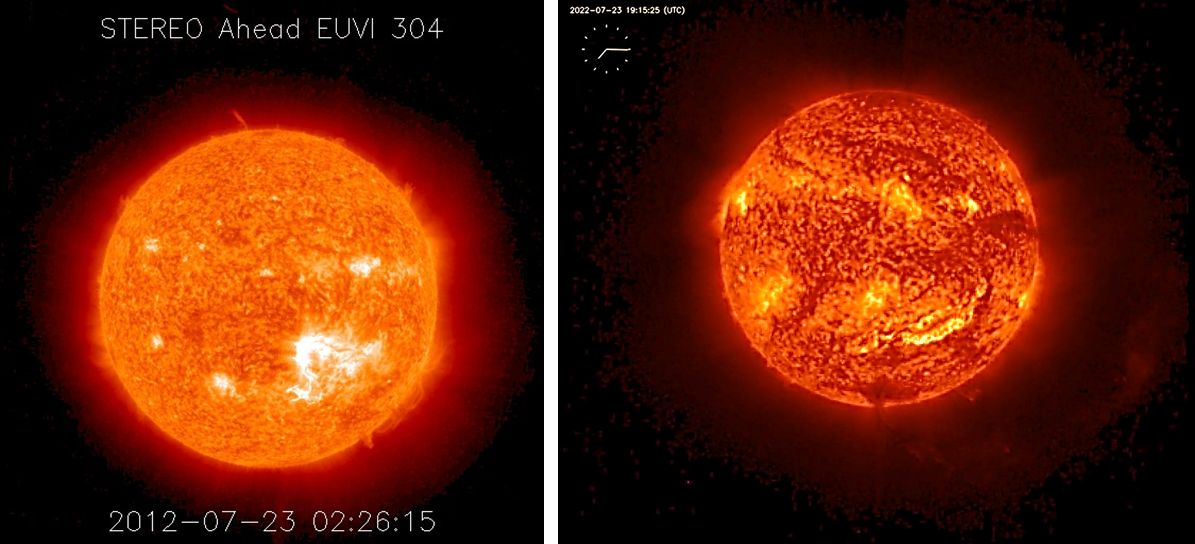On 24 July this year, the space weather forecaster of the SIDC issued the following PRESTO alert: "A full halo coronal mass ejection (CME) was detected by the CACTus automated algorithm. Onset time was determined to be 23 July at 18:48 UT, with an average speed of about 1700 km/s. This is believed to be a backsided event." This information was based on coronagraphic imagery from the SOHO spacecraft. The halo CME was also very well observed by the STEREO-A spacecraft, trailing Earth by 23 degrees at that time. That location allowed a better view of the CME than from Earth. Underneath an image of the CME as seen by the coronagraph on board of SOHO (left) and STEREO-A (right) as seen near the same time, i.e. resp. 22:30UT and 22:38UT on 23 July. A small solar image in extreme ultraviolet (EUV) is overlaid on each coronagraphic image. The clips of the event cover cover most of 23 and 24 July, with a gap in the SOHO images from about 19:45UT till 22:30UT.
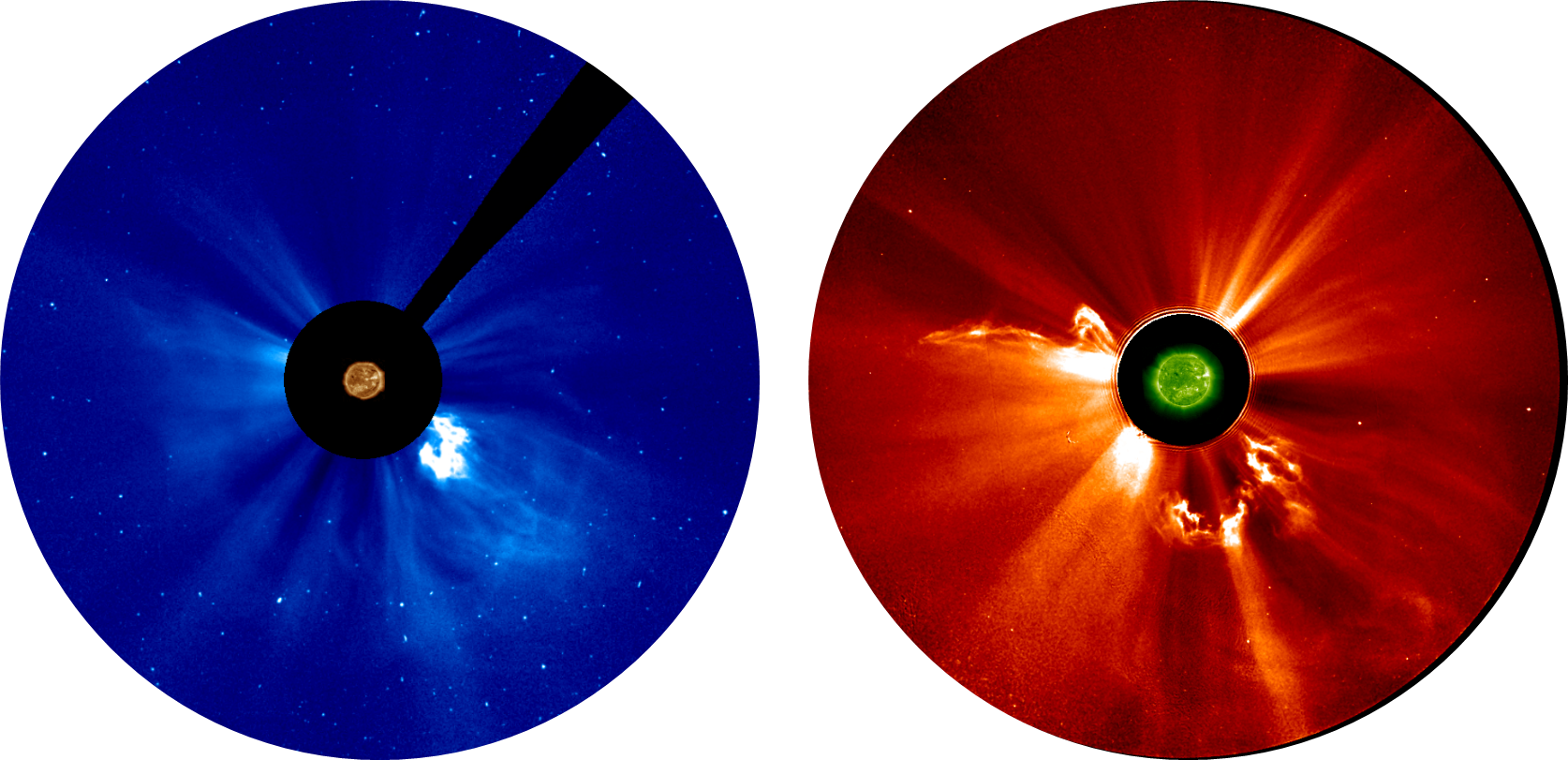
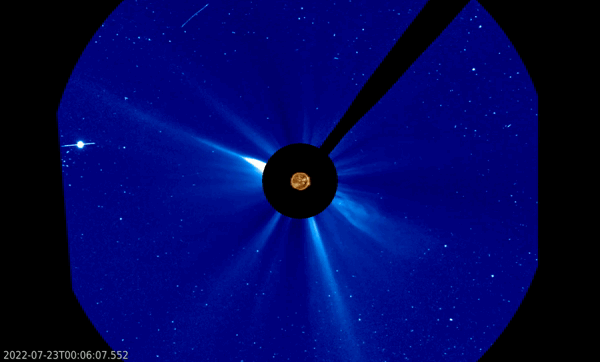
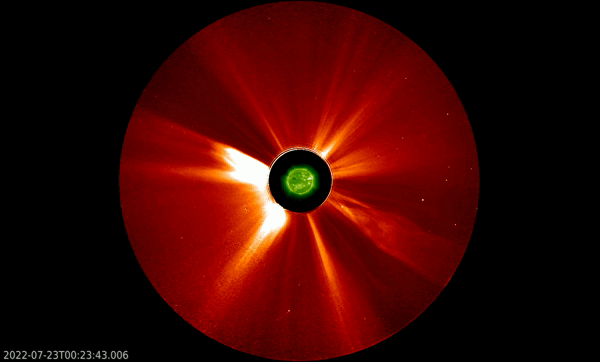
As the eruption occurred on the farside of the Sun, solar observers had obviously no idea what the source of the eruption was. That is... until observations made by the Solar Orbiter became available last week. As it turns out, on 23 July, the spacecraft was located almost diametrically opposed to STEREO-A, preceding the Earth by about 151 degrees. The locations of STEREO ("A"), Solar Orbiter ("SO"), and Earth (representing SOHO) on 23 July are indicated on the map underneath.
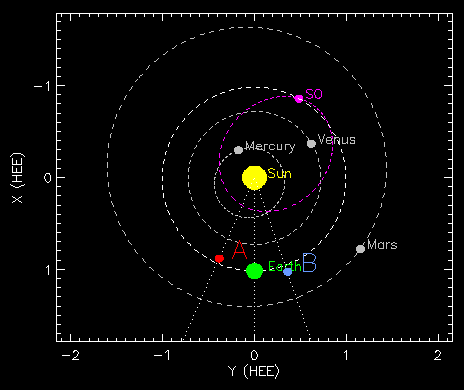
As such, Solar Orbiter had an excellent view on the Sun's "farside" (as seen from Earth) at the time of the eruption. Its Full Sun Imager (FSI), one of SolO's 3 EUV telescopes, showed the source of the eruption to be a long and solid filament, which is a cloud of ionized gas suspended above the solar surface squeezed between regions of opposite magnetic polarity. Being cooler and denser than the plasma underneath and their surroundings, it appears as a dark line when seen on the solar disk. Becoming unstable somewhere between 17 and 18UT, the violent eruption ejected the filament that splitted in 2 during the process. From Solar Orbiter/FSI's point of view, the portions move in resp. the southeast ("lower left") and northwest ("upper right") direction. In comparison, STEREO-A's coronagraph sees the two portions of the ejected filament (CME core) as if in a mirror, with the first portion moving to the southwest ("lower right") and the other portion to the northeast ("upper left" ) - see the imagery above. SOHO's coronagraph mainly sees the southwest portion. The annotated (enhanced) EUV images from FSI underneath show the filament as it starts to rise (left), when ejection of the filament is in progress (middle), and the split of the filament (right). The timings are indicated by the clock. On the solar surface, near and above the original location of the filament, bright parallel ribbons and a series of post-eruption coronal loops can be seen.

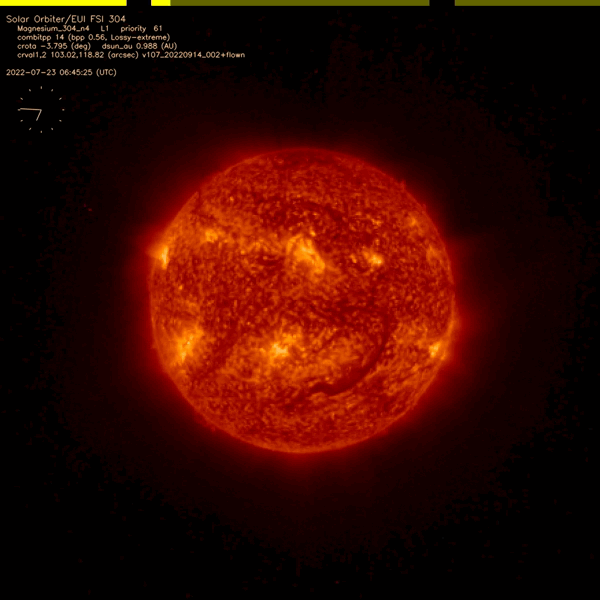
Teams of the various Solar Orbiter's instruments are now scrutinizing their data related to this event, so not only from SolO's EUV telescopes (EUI), but also from its coronagraph (METIS), its energetic particle detector (EPD), and its in-situ solar wind analyzer (SWA). Interestingly, exactly on the same day 5 and 10 years ago (so resp. 23 July 2017 and 2012), other impressive eruptions took place on the Sun's farside (see these STCE newsitems at resp. https://www.stce.be/news/394/welcome.html and https://www.stce.be/news/152/welcome.html ). Though the 2022 event was not as strong as the Carrington-like event of 2012 (Baker et al. 2013), it certainly seems to be worthwhile of a closer examination.
